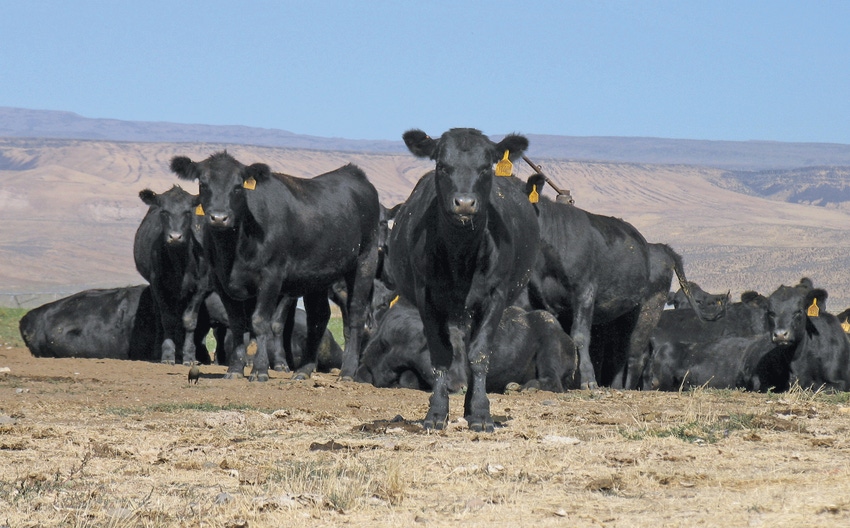Increasing economic efficiency with genomics
The more accurately you know genetic potential, and the sooner, the more opportunity there is to build on the top and cleave from the bottom.
January 9, 2019

A thousand days here, a thousand days there, and pretty soon you’re talking some real time.
That’s how long it takes to feed and see the results of a replacement heifer’s first progeny.
That’s why Ryan Noble of Noble Ranch LLC at Yuma, Colo., used genomics to help identify replacement heifer prospects most likely to merit the investment.
Among other things, Noble reduced the average three-year culling rate of his replacements to 2% from 15% to 17%, after adjusting bull selection based upon genomic data.
Incidentally, according to a BEEF survey of commercial cow-calf producers this year, a third of the respondents say they buy at least some of their replacements. While 52% expect their seedstock suppliers to provide genomic profiles of the bulls they sell, 41.8% use genomic profiling for at least some of their breeding decisions; 10.8% said they base all breeding decisions on genomic profiling.
The value and cost of time is why Jared Decker, Extension beef genetics specialist at the University of Missouri, encourages commercial producers to consider estimates of cow lifetime productivity when selecting bulls.
These are estimates like the Stayability EPD offered by some breeds, which looks at the genetic difference of the probability that a bull’s daughters will remain in the herd to at least 6 years of age. More recently, the American Hereford Association introduced an EPD for Sustained Cow Fertility, which predicts a cow’s ability to continue calving from 3 years old to 12 years old, having first calved as a 2-year-old.
“Given the cost of developing or buying replacement heifers, if those females drop out of the herd in two or three years, we’ve made lots of investment with little return. These tools help identify females that are fertile and will stay in the herd longer,” Decker explains.
Keep in mind that whatever EPD you’re talking about, for almost every widely used breed of cattle, EPDs — long the gold standard of estimating genetic merit — are even more accurate now than 12 to 18 months ago.
That’s thanks to a revolutionary way of calculating genomic-enhanced EPDs (GE-EDPs) by which pedigree, genotype, phenotypic information and progeny performance are incorporated into the calculation at the same time.
These GE-EPDs address time as well, providing a level of prediction accuracy for a nonparent animal that is on par with already knowing the performance of 10 to 20 progeny, depending on the trait in question.
The more accurately you know genetic potential, and the sooner, the more opportunity there is to build on the top and cleave from the bottom.
“There are two things that really drain profit out of a cow herd,” Noble says. “One is the cost of developing replacement heifers. The other is depreciation of cows.
What causes cows to depreciate? “Mostly, it’s open or underperforming cows that end up going to town. That alone can represent a noncash cost of $150 or more per cow per year on an average ranch.”
Moreover, Decker is a proponent of using economic selection indexes to move toward herd-specific goals without inadvertently leaving something important behind. These economic selection indexes account for the traits associated with a particular breeding objective, with each of those traits weighted for their relative economic performance.
“Economic selection indexes are genetic predictions [i.e., EPDs] for profitability,” Decker explains. “Economic selection indexes weight each EPD trait by its economic importance and combine them into one number. They allow us to use multiple trait selection, focusing on our economic well-being. Selection indexes also simplify our decisions, because they combine all of the information into one number on which to rank cattle.”
Decker reminds that various indexes have different purposes. For instance, some focus mostly on end product value, others on replacement heifers and maternal values. It pays to know what traits make up a specific index and how they’re weighted.
By embracing available tools, combined with good old-fashioned cow sense, it’s remarkable what some commercial producers are achieving when it comes to cutting herd costs, increasing revenue and expanding economic efficiency.
About the Author(s)
You May Also Like




.png?width=300&auto=webp&quality=80&disable=upscale)
